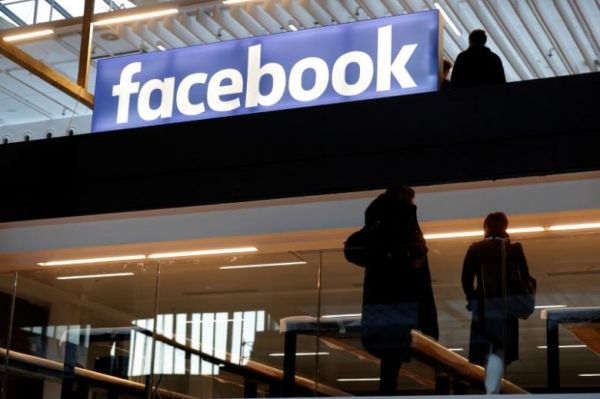
by Editor | May 25, 2021 | Business, Corporate, Corporate Buzz, Large Enterprise, Markets, Technology
 New Delhi : In a bid to help customers build efficient applications on Cloud, Google on Wednesday announced the opening of its first Google Cloud Platform region in Mumbai.
New Delhi : In a bid to help customers build efficient applications on Cloud, Google on Wednesday announced the opening of its first Google Cloud Platform region in Mumbai.
With the India region going live, enterprises will be able to take advantage of the high speeds, low latency and performance benefits uniquely offered by GCP (Google Cloud Platform) services.
Further, the Indian customers will now be able to buy these services directly in Indian currency.
“We are delighted to announce the first GCP region in India. The new region will help customers build applications and store their data, and significantly improve latency for customers and end users in the area,” said Dave Stiver, Product Manager, Google Cloud Platform.
The India region offers several services, including compute, big data, storage and networking.
The launch of the Cloud region, which will have three zones, also opens up newer opportunities for several new partners who will benefit from building their services on Google Cloud.
The new Mumbai region joins Singapore, Taiwan, Sydney and Tokyo in the Asia-Pacific region.
“Hosting applications in the new region can improve latency from 20-90 per cent for end users in Chennai, Hyderabad, Bengaluru and, of course, Mumbai, compared to hosting them in the other closest region, Singapore,” Stiver added.
Google Cloud Platform enables the developers to build, test and deploy applications on Google’s highly-scalable and reliable infrastructure.
“GCP gave us a low latency network and the ability to optimise costs further with custom machine types. The new India region will help us bring our service even closer to Indian consumers,” said Manish Verma, Chief Technology Officer, Hungama.
—IANS

by Editor | May 25, 2021 | Markets, Online Marketing, Social Media, World
 San Francisco : As Facebook, Google and Twitter prepared to face questioning on November 1 into Russia’s interference in the 2016 US presidential election, the tech giants were planning to tell the lawmakers that the Russian content on their respective platforms reached more users than reported earlier.
San Francisco : As Facebook, Google and Twitter prepared to face questioning on November 1 into Russia’s interference in the 2016 US presidential election, the tech giants were planning to tell the lawmakers that the Russian content on their respective platforms reached more users than reported earlier.
According to a report in The Washington Post late on Monday, Facebook was planning to tell lawmakers that 126 million of its users might have seen content produced and circulated by Russian operatives — many times more than the company had previously disclosed about their reach.
Facebook had previously reported that nearly 10 million users had seen those ads.
Similarly, Google also acknowledged that it had found evidence that Russian operatives used the company’s platforms to influence American voters.
Google said in a blog post that it had found 1,108 videos with 43 hours of content related to the Russian effort on YouTube. It also found $4,700 worth of Russian search and display ads.
“Further, Twitter would also tell Congressional investigators that it has identified 2,752 accounts controlled by Russian operatives and more than 36,000 bots that tweeted 1.4 million times during the election. The company previously reported 201 accounts linked to Russia,” the report added.
After scrutiny by the Congressional investigators, the tech giants have been working hard to make political ads more transparent.
Facebook has vowed to make political ads more transparent, allowing users of the social network to know more about the advertisers which may include their identity and location.
“We’re going to require more thorough documentation from advertisers who want to run election-related ads,” Rob Goldman, Facebook’s Vice President of Ads said in a statement last week.
“We are starting with federal elections in the US, and will progress from there to additional contests and elections in other countries and jurisdictions,” Goldman added.
As part of the documentation process, advertisers may be required to identify that they are running election-related advertising and verify both their entity and location.
To help protect integrity of user experience on Twitter, the microblogging site has banned advertising from all accounts owned by Russia Today (RT) and Sputnik with immediate effect.
—IANS

by Editor | May 25, 2021 | Markets, Networking, Online Marketing, Social Media, Technology
 San Francisco : You will no longer have to manually enter country code top-level domain names to avail country-specific services for Google Search and Maps on the web and the Google iOS app.
San Francisco : You will no longer have to manually enter country code top-level domain names to avail country-specific services for Google Search and Maps on the web and the Google iOS app.
And this applies even when you travel from one country to another, for example from the US to India.
Country services used to be distinguished by the country code top-level domain names (ccTLD) such as google.fr for France or google.com.uk for England.
“Google wants to stop the practice of manually entering the top-level domain to get a country’s services,” according to a report in 9to5google.
“Starting today, country services will no longer be determined by domain. By default, you’ll now automatically be served the appropriate country service without seeing a change in Google’s ccTLD,” the report said on Friday.
Google’s other services such as Gmail, and YouTube already functioning this way.
—IANS

by Editor | May 25, 2021 | Markets, Technology
 San Francisco : Google’s efforts to enhance security by extending “not secure” warning to websites not encrypted with “HTTPS in Chrome” has yielded desired results as 64 per cent of Chrome traffic on Android devices is now protected — up from 42 per cent a year ago.
San Francisco : Google’s efforts to enhance security by extending “not secure” warning to websites not encrypted with “HTTPS in Chrome” has yielded desired results as 64 per cent of Chrome traffic on Android devices is now protected — up from 42 per cent a year ago.
The Hyper Text Transfer Protocol Secure (HTTPS) is the secure version of HTTP — the protocol over which data is sent between your browser and the website that you are connected to.
“About a year ago, we announced that we would begin marking all sites that are not encrypted with HTTPS as “not secure” in Chrome,” Emily Schechter, Security Product Manager, Chrome wrote in a blog post late on Friday.
“We wanted to help people understand when the site they’re on is not secure. We knew this would take some time, and so we started by only marking pages without encryption that collect passwords and credit cards,” Schechter added.
More than 75 per cent of Chrome traffic on both Chrome operating system (OS) and Mac is now protected which is up from 60 per cent on Mac and 67 per cent on Chrome OS a year ago.
Also, 71 of the top 100 sites on the web use HTTPS by default, up from 37 a year ago, according to the post.
Meanwhile, HTTPS usage has increasing globally with a usage surge recently seen in Japan where big sites like Rakuten, Cookpad, Ameblo, and Yahoo Japan all made major headway towards HTTPS in 2017.
HTTPS usage in Japan has increased from 31 per cent to 55 per cent in the last year measured via Chrome on Windows.
“We see similar upward trends in other regions-HTTPS is up from 50 per cent to 66 per cent in Brazil, and 59 per cent to 73 per cent in the US,” Schechter said in the post.
—IANS

by Editor | May 25, 2021 | Markets, Technology
 San Francisco : Google has launched a new bug bounty programme for security experts where the company will pay $1,000 for finding security flaws in Android apps and then reporting it to Google researchers.
San Francisco : Google has launched a new bug bounty programme for security experts where the company will pay $1,000 for finding security flaws in Android apps and then reporting it to Google researchers.
“The Google Play Security Reward Programme recognises the contributions of security researchers who invest their time and effort in helping us make apps on Google Play more secure,” the tech giant said on its website late on Thursday.
All Google’s apps are included and developers of popular Android apps are invited to opt-in to the programme being run in partnership with HackerOne.
“Through the programme, we will further improve app security which will benefit developers, Android users and the entire Google Play ecosystem,” the company said.
For now, the scope is limited to RCE (remote-code-execution) vulnerabilities and corresponding POCs (Proof of concepts) that work on Android 4.4 devices and higher.
“This translates to any RCE vulnerability that allows an attacker to run code of their choosing on a user’s device without user knowledge or permission,” Google said.
This is how it works.
Researcher identifies vulnerability within an in-scope app and reports it directly to the app’s developer via their current vulnerability disclosure or bug bounty process.
App developer then works with the researcher to resolve the vulnerability.
Once the vulnerability has been resolved, the researcher requests a bonus bounty from the Google Play Security.
“The programme will evaluate each submission based on the vulnerability criteria. A reward of $1,000 will be rewarded for issues that meet this criteria,” Google said.
“We are unable to issue rewards to individuals who are on US sanctions lists or who are in countries (Crimea, Cuba, Iran, North Korea, Sudan and Syria),” it added.
—IANS

 New Delhi : In a bid to help customers build efficient applications on Cloud, Google on Wednesday announced the opening of its first Google Cloud Platform region in Mumbai.
New Delhi : In a bid to help customers build efficient applications on Cloud, Google on Wednesday announced the opening of its first Google Cloud Platform region in Mumbai.

